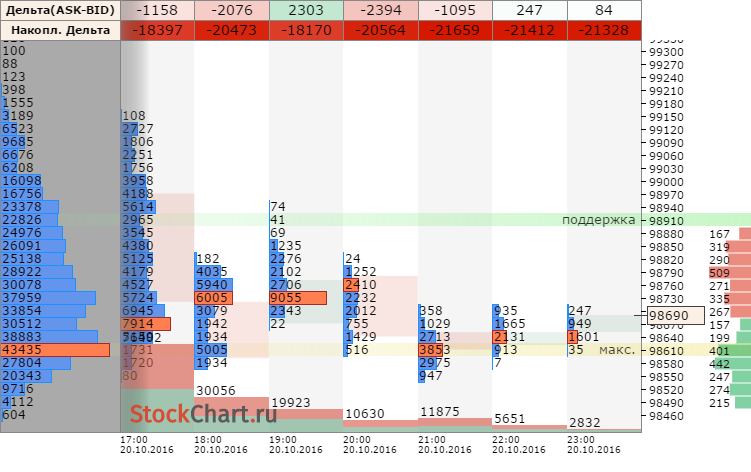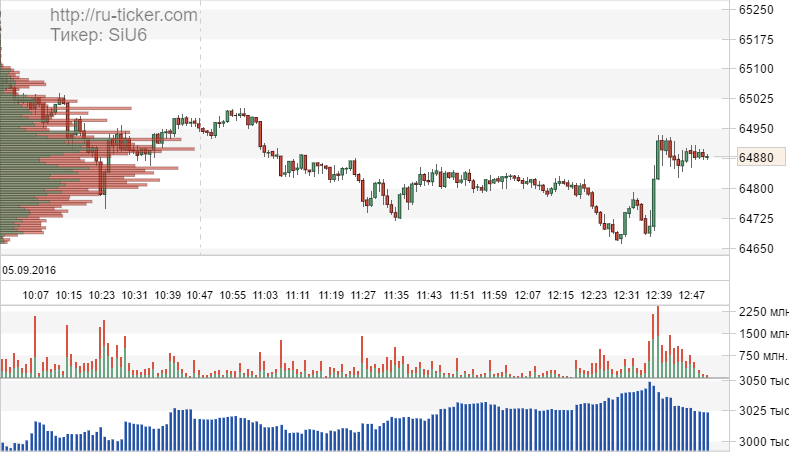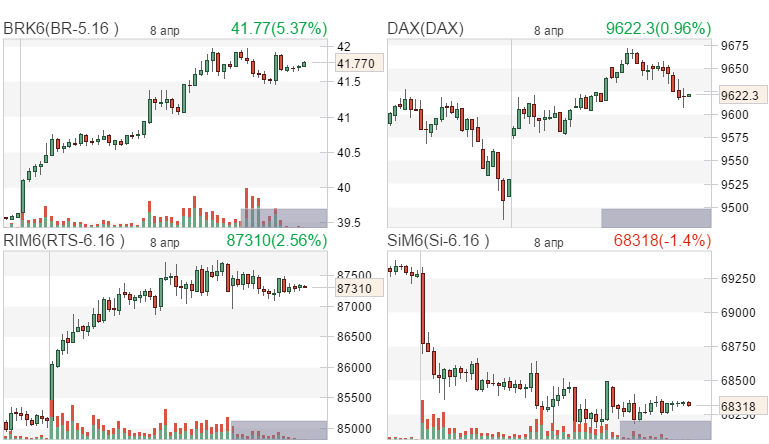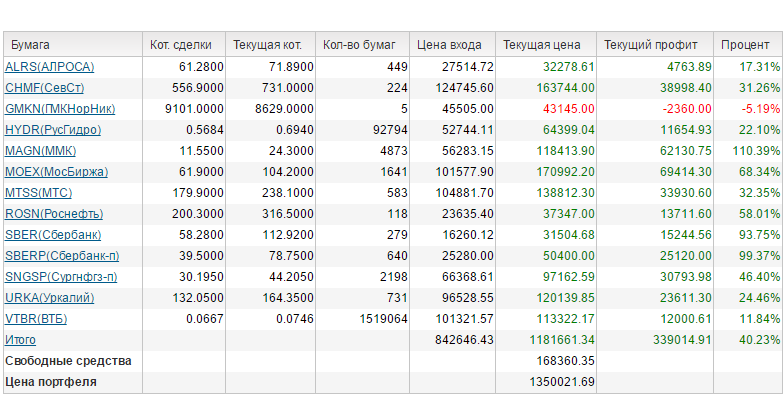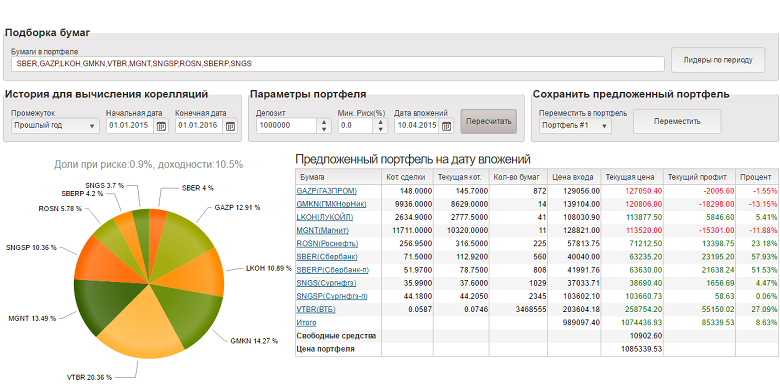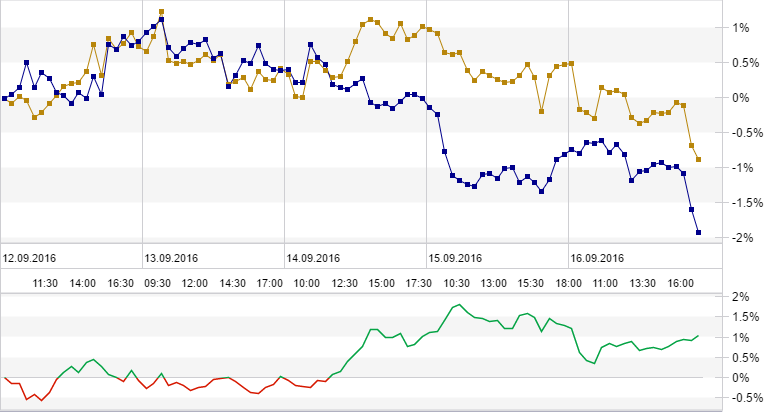 |  |  | |||||||||||
 |
|
||||||||||||
 |  |  | |||||||||||||||
 |
|
||||||||||||||||

Техническая поддержка
ONLINE
 |  |  | |||||||||||||||||
 |
|
||||||||||||||||||
How diodes work in a power supply with EveryCircuit Simulation
ruticker 02.03.2025 12:34:32 Recognized text from YouScriptor channel Kiss Analog
Recognized from a YouTube video by YouScriptor.com, For more details, follow the link How diodes work in a power supply with EveryCircuit Simulation
Hey guys, what's up? Eddie Aho here with KISS and Like Calm. So today, we are going to cover diodes, bridge rectifiers, or rectifiers in general, and power supply. We're doing this to support the power supply design we're doing for the audio amplifier, and I'm gonna walk you through how diodes work in a power supply. We're gonna do a bridge rectifier, and I'm gonna bring you into a circuit, and we're gonna use a simulation package. I think it'll go kind of smooth this way. Let's do this thing! ## Understanding Bridge Rectifiers Welcome to understanding bridge rectifiers! We are designing a power supply in another video series, and I wanted to go into a little more detail about how rectifiers work. Diodes used in power supplies are often referred to as rectifiers; they rectify the voltage, making an AC voltage into a DC voltage that we can use. What we have here is a circuit with an AC waveform at 60 Hertz and a hundred volts in amplitude, plus a hundred and minus a hundred. This is a voltmeter showing the AC waveform, and we have a transformer in our power supply. This transformer has a 10 to 5 turns ratio. So, if we had 10 volts on this side, we'd get 5 on this side. However, we do have a hundred volts, as I said, 100 volts peak, so we'll get half of that on this side. We'll get 50 volts peak on this side, and then I have a 1 kilo-ohm resistor here as an example load. This is our ground symbol; we have a ground symbol on both sides. The symbols are the same on both sides, so in this case, we retain our output ground. Terrific ground! It doesn't matter; it's just for simulation purposes. But when we're looking at signals, it's in reference to ground. Okay, let's look at the voltage on the secondary side of the circuit. By the way, this is the primary side, primary power, and this is secondary power. Secondary power is derived off the isolation transformer, and that's shown by a coil here and a coil here with two bars in between, meaning that it has an iron core or some kind of core, ferrite core, iron core. So, it's not an air inductor; it's a transformer, so we're transforming and stepping the voltage down 10 to 5, which is 5 goes into 10 twice, so it's a two-to-one step-down transformer. Okay, so let's look at the voltage here on this voltmeter. If you notice, sometimes this instrument does this; it switches my voltmeter upside down, so that's seeing you can tell for the minus to plus signals. So, it's tight and upside down. Let's just flip that around and start that again. Okay, so now they're both plus. You see the waveforms are in the same phase, the green voltage being half the voltage of the blue voltage. By the way, this is 60 Hertz we have here in the USA. So, pretty simple, right? Now, since we have an AC to AC waveform like we do in our power supply design, we do want to rectify and change that to DC voltage for our load. This load resistor right now is a 1k ohm resistor. Let's just watch the current that's in our load resistor. Now, see the arrow? It's pointing up; that's electron flow. Watch the electrons flowing instead of conventional flow. Well, it's interesting how this guy likes to flip things around on me, but notice now that if I dim it upside down, the house plus to minus and where current is going this way, it's now our green and our orange waveforms are in phase with each other, and they're out of phase with the input voltage only because the meters are hooked up backwards. So, let's flip those around again. Okay, let's start that again. Now, everything's all the meters are plus up here, minus to ground, so everything is referenced to ground, and so it's all plus waveforms, plus voltage meter readings. So, everything is in phase now. The orange waveform kind of hides underneath the green waveform. Whoops, there they go; they rescaled the scene. So, over here we have 40 milliamps and minus 40 milliamps. The orange current goes above the 40 milliamps; it's almost 50 milliamps—it's 49.9 milliamps. We have a little bit of loss across the transformer, and so let's see the green waveform or 49.9 volts. 1k is 49.9 milliamps. Those are peak values. Okay, so that kind of shows what a transformer does, stepping down the voltage, and we can see what AC looks like on both sides. Now, let's introduce a diode into this circuit. That diode will only allow current flow in one direction, so instead of allowing this orange current to come below the zero line into the negative line, we'll only have the positive pulses. Let's see what that looks like. Okay, before we introduce the diode, let's introduce a capacitor so we can see what a capacitor does. We have this capacitor in here, and you see the plus/minus, and they alternate as the voltage goes plus/minus across this capacitor. It's only one microfarad. Let's increase it. The green voltage is the secondary voltage, and the blue voltage is primary. It's 10 to 5, so we have 100 volts peak and 50 volts peak on the green. Okay, so let's increase the size of the capacitor and see what happens. Okay, there's 5 microfarads. For one to five microfarads, don't see anything. Okay, keep on increasing it, and I'm up to 228 microfarads. Do you see any difference? Let's go 5 millifarads. Okay, so the capacitor doesn't seem to do anything to the voltages, right? It's a series; it has an impedance to the voltage, and it charges and discharges to the AC cycle. It allows a certain amount of current flow through it depending on the value of this capacitor. As far as helping us create DC voltage, it doesn't do that. We need that diode in here to help us do that. So now we're gonna go for the diode in and see what happens. Okay, so now we have the diode in the circuit. This is our secondary side of the circuit on the other side of the transformer. We know what our primary side looks like, so it's a 100-volt signal, 60 Hertz, and we've got a 10 to 5 turns ratio, so we're 110 to 5; that's two to one, and so we're gonna get 50 volts on this side, and that's what we've been looking at. Now we've added this diode, and we still have the capacitor over here. I've changed it to one microfarad, pretty small, and we have the 1 kilo-ohm resistor. So, let's take a look. Here's our AC waveform coming in through our transformer. The first wave wasn't quite as tall as I had to build up a little magnetic field in the transformer to transfer the voltage, so now each pulse looks like the next; every cycle is the same as before. Okay, incidentally, because of the transformer, I have been here; we're at 45.4 volts on the top and minus 45.4 volts on the bottom, so we've dropped a little bit of voltage in the... well, the diode is gonna drop some voltage from this side to this side. So, that's one thing, but we're still looking at this side; we haven't gone to this side of the diode, so we're gonna see some voltage drop across the diode. But right here, we're still on this side of the transformer. Before, we had 49.9. Well, with the capacitor and the resistive load, we're changing our load scheme a little bit, so now we've got a little bit of voltage drop through the transformer, and we're getting 45.4 volts. Okay, that's just a simulation model of this transformer; that's all that is. Alright, so now let's look at the voltage on the other side of the diode. Okay, you see it started off flat here, and then this blue waveform went up. It went up, and see how it kind of slopes off? That’s because this capacitor has a little bit of a charge on it, but not very much, right? That's not really helping us much, but you can see that there's a capacitor there now. The green and the blue waveforms appear to be right on top of each other. Okay, that green waveform is going to 44.5 volts on this side, where you have 45.4. Okay, in this side, we have 44.5, so we've dropped a little voltage across this diode. Again, we have 45.4 as a voltage on the peak and 44.5. That's about 0.9 volts; it's hard to see on this scale, but you can just kind of see a little blue up on top, and you can see a little bit of a curve here. So, let's make this capacitor a little bit bigger because it's not what we want to do. We want to hold the... we want to have very little ripple, and right now we have a lot of ripple, but what we have now is a pulsating DC waveform. It's no longer AC; this side is AC; it goes from plus to minus. This side now is only DC voltage, but it's pulsating DC. Okay, so let's see if we can make this capacitor bigger. Okay, grab a hold of this guy. Okay, we're up to 5 microfarads. So, 5 microfarads, you can see that now it's got a longer charge, but still, it's almost down to 0 before the next waveform comes up again. Every time we get a charge waveform, it charges the cap back up, but then it discharges pretty quickly. So, 5 microfarads isn't very big. I mean, we only have a 1k ohm resistor pulling a load off of that, but that was approximately 49, and well, it's about 44.5 milliamps, so that's not very much. Let's make that capacitor larger. Okay, there's 10 microfarads. So, 10 microfarads, you can see that it charges and then it drops down, charges, comes down. Now, what I want to show you is an important parameter: the peak current going to this diode. Before, we were making this a surge large; the current followed the voltage waveform, but now with this diode, we're only charging between this spot and that spot where the green touches the blue is where we charge. And when the blue drops below the green, we don't charge. Okay, so whenever we have that diode drop, approximately 0.9 volts is where, you know, in our picture here, it would be where the green seems to cover the blue. However, the blue is slightly above the green, so whenever the blue is above the green, current is conducting. Let's see what that looks like. There you go! Okay, the waveform is changing because we're... this meter's almost scaling the waveform so we can see everything, but notice as soon as the blue goes above the green, we get an orange pulse, and then the orange pulse turns off when the green drops below the blue, or I'm sorry, when the blue drops below the green. So, the capacitor stays charged up and drops off. Okay, now let's make this capacitor... I'm going to drop the value of this capacitor again just to show you how that changes. Let's go back down to one microfarad. That's one microfarad; that's where we could barely see the green waveform having any charge at all, just a little bit of a curvature right there. So now you can see the orange waveform looks much more almost sinusoidal. As soon as the blue crosses the green, we get kind of an inrush current, which we call X, as the capacitor drains. So, it charges quickly, and then once it does, then it kind of follows the green waveform. But once the green or the blue drops below, or purple, whatever that is, drops below the green, then the orange turns off again. So, what's important about this is right now the green is... or I'm sorry, the orange waveform is on for kind of a long period of time, which is good because the value right now is going up to about 50 milliamps. Okay, it's actually 47.6 milliamps. Alright, so now let's make that capacitor big again, and what you're gonna see is that my waveform, since it only has so much time to charge a capacitor, is head charge is gonna put the same amount of current into it in a short amount of time, so it gets very tall. Okay, spread it out. Okay, that's what it looks like. Okay, now let's go ahead and make that thing bigger again. I'm just going to go back to ten, and then we'll go larger than that even, but just so I can tell you what the value is, we're around 49 milliamps before. Now we're getting peak currents at 225 milliamps. You see that? And it's very peaky when it first inrushes, when that current first hand rushes into this capacitor. And I can show you what that looks like. Look at the current into this capacitor. Well, that's the current as it's discharging to the capacitor into the load, and you see how it has a sharp angle. So, the range has to also help provide load for the resistor and charge faster. So, you can see the capacitor drop some voltage, and this orange current goes up. Then this red waveform goes up as it charges the cap, and then the cap kind of overshoots a little bit, and then it discharges down to the orange, so then it drops off, and it has to recharge again. Let's turn that off; it's kind of getting busy. Well, let's leave it on just for a moment. I'm gonna make this capacitor even larger. Let's go to 50 microfarads. Okay, so now the cap's pretty big. What's happening, though, is our green waveform, our voltage out here, is starting to become... starting to look better. Very, you know, much less ripple. See, that's much less ripple. It's going up for the peak up to 44.5 volts, and it's dropping down to 33.5 volts, so it's about 11 volts peak-to-peak. So, that's still quite a bit, but you can see the current. And let me turn off one of these guys. You can see the current going through this diode is getting very peaky, and it doesn't look sinusoidal anymore. Now it just pops up, and then it drops; it almost drops right off. So, it doesn't have that sinusoidal waveform; it's starting to become very sharp. When current and voltages become sharp, it's more noisy, so it's actually creating more noise on this primary circuit trying to provide power to this diode over here. We're getting smoother to our power supply, which is what we want, but at the same time, we're actually causing a little bit of a noisy issue over here. Okay, that's going up to that current right now is going up as high as 602 milliamps. So, we started off around 50 milliamps; we're all the way up to 600. We've got 10 times the current peak from 1 microfarad to 50 microfarads. Okay, let's make this guy even bigger. Okay, there's 100 microfarads. Okay, 200 microfarads. Our green waveform is getting flatter now; it's going from 44.5 volts to about 38.3 volts, so it's about 6 volts peak-to-peak, just a little bit less than 6 volts peak-to-peak. But our current, again, it looks like a shark's tooth; it's just very sharp because it can only turn on during that part, you know, where the green waveform is not quite flat, where it has to get charged back up. It's only charging during the part where the purple waveform is above the green waveform. The voltage here has to be higher than this side so that it can flow through that diode, so it's 800 milliamps. Okay, let's make that one millifarad; we'll make it really big. Okay, there's 1,000 microfarads, 1 millifarad. Now you notice that first pulse I had to charge up that cap, so it dropped the voltage; it made the voltage sag. So, it actually had a big charge cycle. There's a big one there too. Okay, so let's look at those big charge cycles making that cap big. Now we're charging that capacitor, getting smaller and smaller, so we're getting to more of a steady-state cycle here. Alright, so this current one says the diode is up to almost 1 amp, 947 milliamps. So, that's quite a bit. That has increased quite a bit; it's a very sharp peak, but look at the green waveform—nice and flat. So, the voltage over here right now is going from 43.8 volts down to 43.1, so it's only 0.7 volts peak-to-peak. Now, if you notice, the voltage has been dropping, though. The DC value has been dropping; the peak of the green waveform has been dropping because we're getting more losses to the transformer and the diode as we increase those peak currents because we're all the way up to 1 amp now. Okay, so how do we improve on this? Well, see these purple waveforms down here? The bottom ones, we're only half-wave rectified right now. We're only taking one of the pulses from the AC and sending it to the load. This other negative pulse, nothing's happening. We're only taking current on the positive side of the pulses. That's one cycle; one cycle is about 16.7 milliseconds. But that every half cycle, we're getting a negative pulse. It'd be great to get a... to direct that negative pulse up to here. So, when you think about it, this transformer during one moment—let's spread this out a little bit so it's going very slow—if you see these waveforms here, at one moment we got a positive waveform here, and then it slowly turns where the positive is down here, and the negative is up here. So, when that happens, if we could take these, if we could set some diodes up just to steer that voltage and put that bump up here, we can do that. We can use some more diodes, and we'll steer each waveform to the top side. Let's do that now. By the way, to do that, since I only have a single winding on this output, I'm going to have to use three more diodes to steer that. Imagine if I had one diode here going the same direction, like this current is going this way through the load and back this way through the transformer winding. Let's go ahead and around this way. Okay, it doesn't flow through that ground and go anywhere that way; it just cycles through here because we're isolated from this side. So, the current just cycles this way. That ground waits for him; even though we're touching here, there's no current flow to that side. It's just all through here. So, imagine if we had another diode facing that direction. Well, it really wouldn't do anything to us right now; we already are steering the current this way. But when we want to take the transformer winding to get both pulses, we're gonna have to put a diode here, and that forces that helps force the current this way during one cycle. And then we'll use two more diodes to switch the waveform around so that we get what looks like a negative pulse into a positive pulse on the top. Okay, so this is what we call a full bridge rectifier. There are four diodes in a bridge, so now we have a diode; we have two diodes facing this direction; they're tied together. So, whenever we get a plus waveform on this side relative to this side, it's going to go this way. Whenever we have a plus on this side, it's like we did before; it's going to go this way. Now, let's follow that loop and bring my pointer over here. We're gonna go through this diode, through the load, back around here, and we're going this way. So, we follow this guy to this side and then come back through the transformer. So, we've got to go through a transformer because that's our voltage source. So, that's the loop right there. Okay, we're going to turn this on so you can see it. I just want to give you a heads up what to look for. Well, then that's going to happen during one side of the cycle. Right when the cycle flips around, where this becomes plus and this becomes minus, then the voltage goes this way, or the current, I'm sorry, it goes this way, comes up here through our load. So, it's always going through our load in the same direction because we want DC up here. So, he's gonna be plus up here, comes down, comes around, and then comes to this diode and through our transformer. So, that's got kind of a strange path. Again, it comes through this diode, through here, down our resistor, around here, and it's got to find its way back up here. So, it's this diode here, comes to this diode, and comes back there. So, that's our circle. So, these diodes are just steering diodes; they just help when the waveform is rotating back and forth. They steer their waveform properly so we always have plus up here and minus down here. Okay, let's watch that. You can see the waveform, the green one here, and the blue waveform started right here. We get a plus bump; that bump there became plus. Now see the bump here? These negative bumps are starting to become positive now, so we get a charge. We get a charge pump on the positive cycle like we did before, a positive side, positive side. But on the negative side, we're also getting charged cycles. So now, instead of every 16 milliseconds, 16.7 milliseconds, we get a pulse that's one cycle, and that's one over 60 Hertz. Now we get double that, so it's like 120 Hertz. So, we changed our... essentially, we changed our waveform from 60 Hertz to 120 Hertz, doubled the waveform. So, we get double the charging pulses, and you notice on each trailing edge, it's a little bit of a bump like we did with that one microfarad cap. But now you can imagine we don't need to have this capacitor as big because now the time between pulses is half. So, let's start to make that larger. And by the way, let's watch the charge current. We're gonna just look through one of the diodes because every diode is gonna look the same, you know, so we'll just look through this diode. Okay, now with the only one microfarad cap, we only get a sharp edge for just a moment, and then it starts becoming kind of sinusoidal, kind of smooth because the cap's not very big. It doesn't take very much to charge it. Then after that, it almost follows the voltage waveform. There's a little bit of lag because of the capacitor, but let's make that cap larger and see what happens. Okay, we're gonna go up to 10 microfarads from 1 to 10. Just jump right on that. There, okay, so **10 microfarads**—we're at **200 milliamps**. Well, it's **187 milliamps** to be more precise. So now we're getting a charge cycle here, obviously, because you can see the voltage gets bumped up from the other diode. We can look at that too. So now the red one turns on, then the orange. So, every cycle we get a pulse, and **187**—well, we had to kind of charge up the capacitor, and so now they're all charged up; it's about **177 milliamps**. I'm just for reference; I didn't tell you what the current was when it was **1 microfarad**, so we're gonna just jump back down to **1 microfarad** real fast just to compare to the half-wave rectified signal. This is a full-wave rectified signal, rectifying both sides of the waveform, so it's a **full bridge full-wave rectifier**. Okay, so you see how the first few cycles have to kind of charge with the cap, and once it kind of becomes more of a steady state, then each waveform looks like the next. So, the peak currents in these is about **46.8 milliamps**. Now, that was about the same as it was with a half-wave rectifier, right? Even though we're getting double the charge cycles, why is that? That's because our capacitor is being discharged every cycle, so it has to start over. So, every one is the same. It's not until we start keeping that capacitor above ground where we don't have to start from zero where it really starts to make a difference on the charge current. So, let's make that cap big again. Okay, so the first pulse is kind of causing noise, but the first pulse is kind of big to charge up this cap, and then they settle down. They settle much quicker because we're getting double the pulses in the same amount of time, but you can still see there's some unevenness; you know, they're not quite even yet with each pulse to the next. So, it's gonna take a few cycles to start to level out. Now, incidentally, our voltmeter over here—look how flat that is at **100 microfarads**. Remember, we had to go quite a bit bigger than that before to get it that flat, but now that we have double the charge cycles, we have **43.6 volts max** and **40.6 volts min**, so we have about **3 volts peak-to-peak** with **100 microfarads**. That's pretty good. Now, you may notice that the voltage is dropping again because now we have to go through two diodes with each charge cycle, so that's somewhat of a trade-off. Okay, we're gonna make this capacitor larger; we're gonna go back to **1 millifarad** again. Okay, there's **1,000 microfarads**, **1 millifarad**, and you can see those first cycles really have to charge that big cap, and then the pulses get smaller. Now, this instrument changes the range, so it makes them look like they're getting bigger, but really it's just changing the range here, the scale on the site. So right now, through one of these diodes, we're getting about **half an amp**. So anyway, you can kind of see what's happening. We're getting double charge cycles; you can see that the blue waveform now is very flat. These peak charges before were almost an amp; now they're around half an amp because we have two diodes. I mean, we have double the charge pumps, so we're getting about **480 milliamps**. So, I hope that helps understand how rectifiers work and how the diodes are used for steering the voltage and how the voltage drop on the diodes—even though we're getting a flatter voltage, we're going to double the pulses; we get two diode drops in a full bridge rectifier. You can also see that with higher currents, we were getting some voltage drop across our transformer. So when we size these parts, we have to be cognizant of all those things, and I have a different current rating on each diode, so one diode is dropping a little bit more voltage than the other one. So, you can see how the diodes dig faster than the transformer. All these things play a role in what you end up with voltage here. The other thing you can see is that by making the capacitor very large over here, we're getting really high peak currents over here. Okay, so what I've done here is I've turned on the current so you can see the current coming out of the power source, and that's a blue waveform. So you can see the orange and red waveforms, the pulse charge pulses charging up this **100 microfarad** capacitor, and we can see the blue is the input. So, every time when these diodes turn on, it pulls current from the input, but the input is AC, so you get a pulse up here, pulse down here, pulse up here, pulse down here. This bridge rectifier, these diodes steer the current so they're all positive. So, this side of the diodes, we're getting just all positive pulses. But you can see by these large capacitors creating these high peak pulse currents that it's done so on the input as well, and that can be an EMI problem. So, it would be beneficial for us to add some filtering to help smooth that out a little bit. Now, let's turn off the current and the diodes for a moment. Whoops, there we go. Okay, so now we're just looking at the input, the input voltage, and the input current. If you ever studied power factor in school, even though the power factor, you know, without the rectifier diodes, you'll see the current is an AC waveform just like the voltage. And depending on if they're in phase, happening at the same time, or if they're offset, you get a power factor, a phase angle. When you add rectifiers, you get these pulses; it completely changes the power factor analysis. So now you have current happening in these large pulses, so that causes distortion, and it causes a phase change between voltage and current. And those two factors are what create the power factor with a bridge rectifier circuit. That's another whole topic. Let me just bring this down just a touch so you can see the arrow. So anyway, that's another whole topic, but for now, what we want to show is how the capacitor affects these peak pulses, and we did that so that we could get this voltage. Let's turn that back on. We did that all so that we could get nice smooth output voltage with very little ripple, but there are ramifications to those peak pulse currents. So, we've got to do things to make sure that that doesn't cause noise problems. But our voltage now on this side of the circuit, we're gonna have a nice clean power supply over here. It's just that we want to come back here and maybe do some filtering. But that's kind of an introduction to rectifier diodes and a power supply circuit. Hope that helps with understanding that and selecting these diodes for these high currents because, you know, you're just charging during a small part of the waveform. So, the average current is much lower than these peak pulses. So, when we select these diodes and we look for these high current pulls, you can see why. The other thing is we know there's a drop across the diodes, so that's something for us to consider when we select our transformer. If we want a certain voltage over here, we've got to take two diode drops into account. You know, the transformer has to handle these high peak currents, so it's not pretty. Now, RMS sinusoidal current is putting up these big pulse currents, so if the transformer is designed for lower steady-state current, then there's going to be some losses in the transformer when we have these high peaks. These are all considerations you can... I hope you can see how the capacitor and all these things affect each other. And I'm going to a full bridge; it's definitely worthwhile. Even though we get an extra diode drop, we get a much smoother output. We get charge pulses every half cycle, every **8.3 milliseconds**. Alright, well, thanks for watching!
Залогинтесь, что бы оставить свой комментарий

